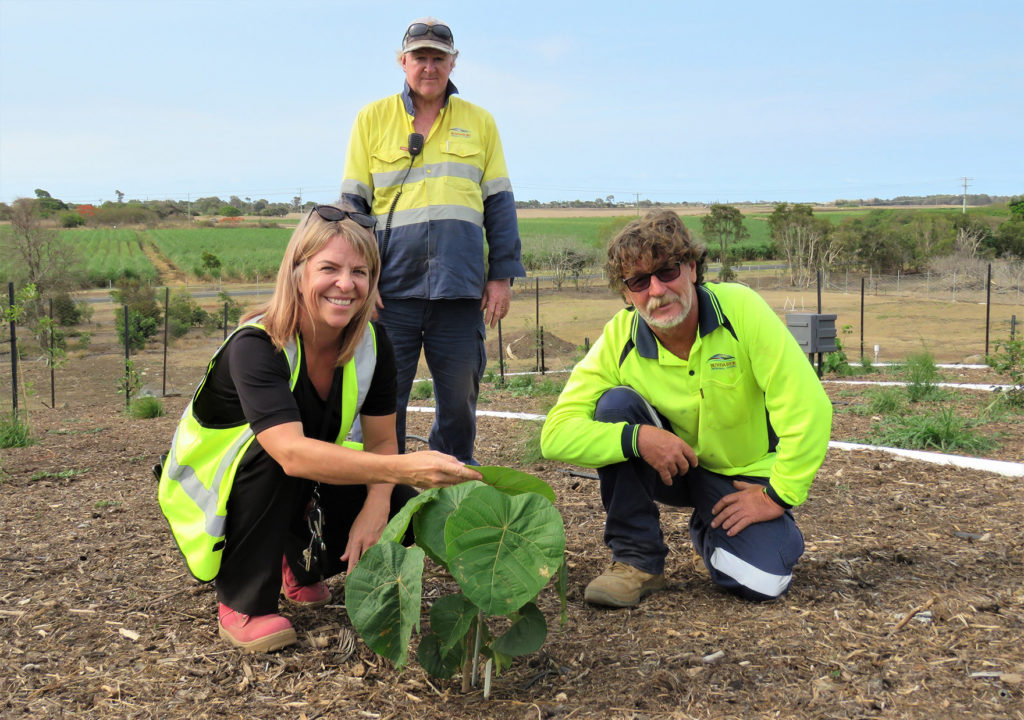
The trial of sustainable capping technology at the Qunaba Waste Management Facility is on track to transform the landfill landscapes of our region.
Known as a phytocap, this pioneering technology uses scientific modelling to select a combination of native plants and soils which act as an efficient bio-pump system.
This controls the amount of rainfall that’s able to access the compacted waste, reducing the percolation of water and protecting our local groundwater supply.
Since hearing about the environmental benefits of phytocapping and its long-term success overseas, Bundaberg Regional Council landfill operations coordinator Kerry Dalton has been working through the regulatory steps to gain approval for its use in Bundaberg.
“Current capping options can be expensive to construct and maintain and can show signs of failing in our subtropical climate after just a few years,” Kerry said.
“Clays shrink and swell depending on the temperature and rainfall, causing large cracks that let water in and gas out.
“Liner movement, as a landfill subsides, can also result in expensive repairs.”
Kerry said due to the location of the trial, visitors heading to the Mon Repos Turtle Centre will see the trial develop.
“We’re hoping this will give the community pride and confidence in Council’s commitment to environmentally sustainable operations,” she said.
Environmental technical officer for Waste and Recycling Victoria McKay managed the on-site phytocap trial development and construction.
“Equipment installed in the 400 sq m trial plot monitors the long-term trends in water movement throughout the soil profile,” Victoria said.
“This can be used to calculate the efficiency of the vegetation in returning the soil moisture back to the atmosphere.
“The planting trial area was designed to monitor growth, survivability, competition by introduced species, and habitat regeneration for local wildlife.”
For Victoria, her involvement in this project has been a rewarding experience.
“This is a really exciting and collaborative project to be involved in,” she said.
“Ecology experts from Council’s Parks and Natural Areas department were invaluable in selecting and raising the native plant species to support the bio-pump action that drives the science.
“We were also able to partner with Masters’ student Joanne Huth from Griffith University to undertake the modelling research for our soils selection and measurement design.”
The next stage is developing a larger scale phytocap pilot program based on the results from this trial. Consolidated results from the two trials will then be used to make an application to the Department of Environment and Science, allowing Council to adopt phytocapping as an option long-term.
If approved, the trees planted will also form part of Council’s One Million Trees program.




